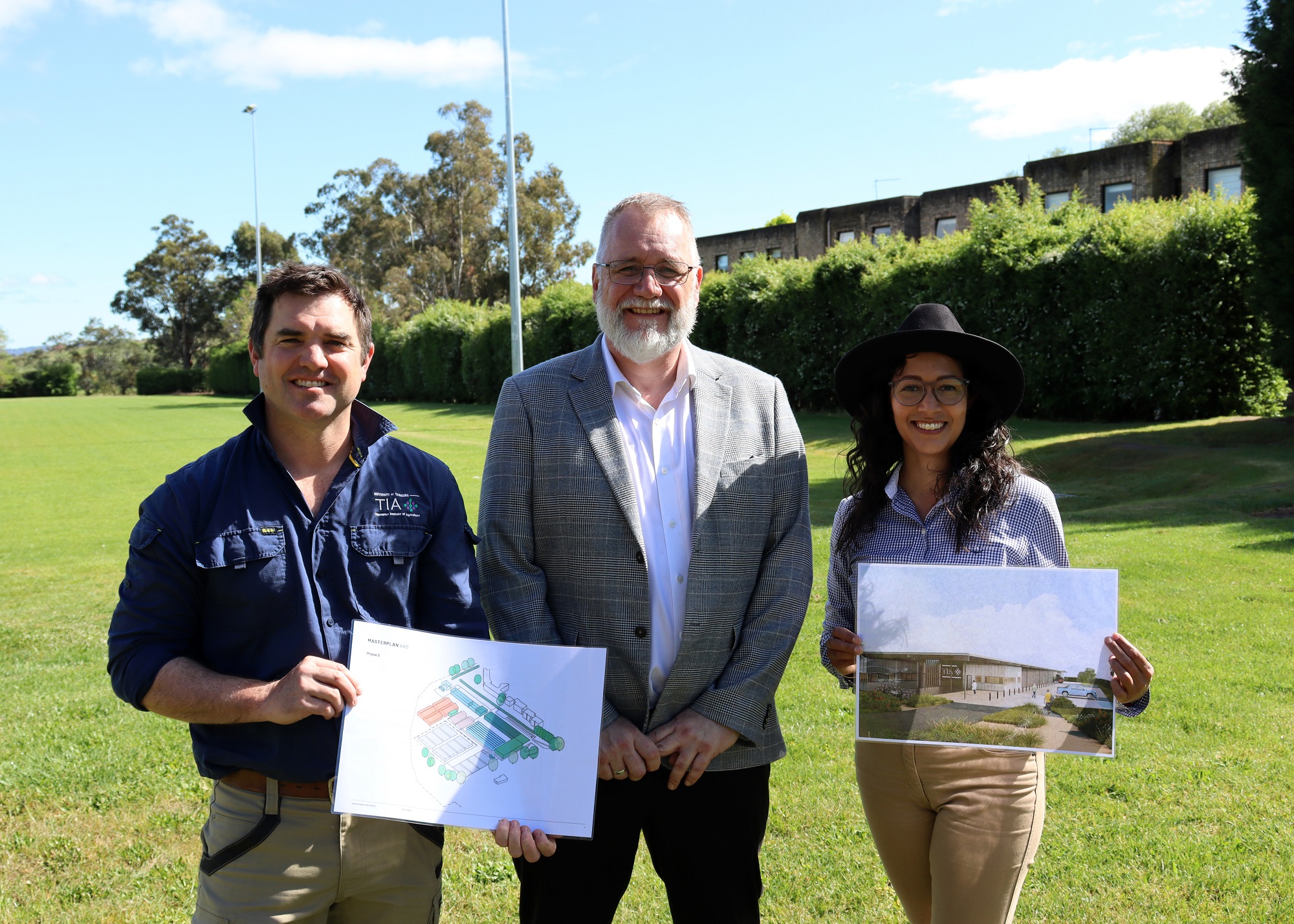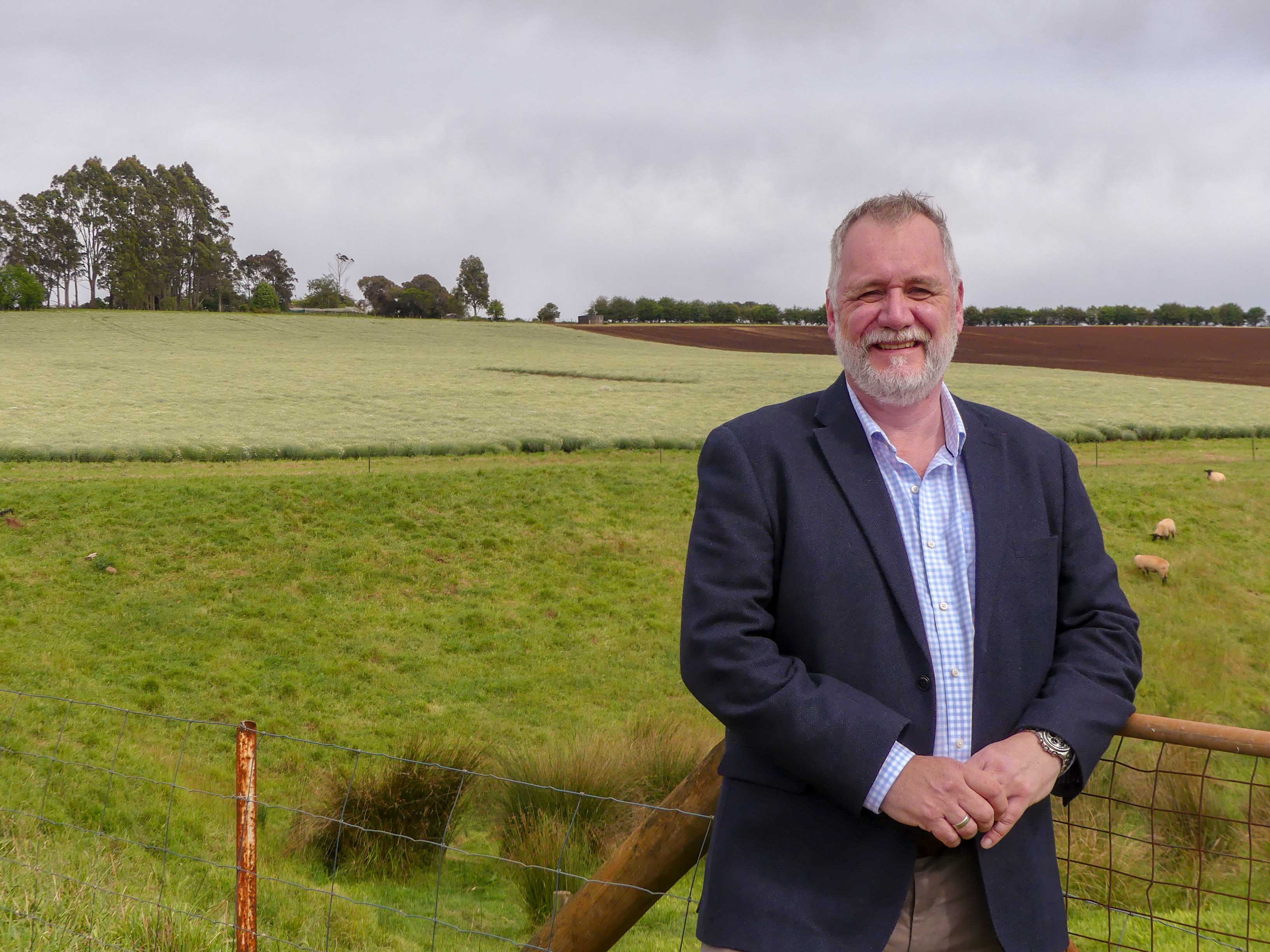The Tasmanian agriculture sector is set to benefit from a multi-million-dollar investment in research and education infrastructure in Northern Tasmania.
The Tasmanian Institute of Agriculture (TIA) has shared plans for a new development including a glasshouse, multi-purpose research facility and a large space for in-ground trials including retractable roof growing areas and polytunnels.
The $26 million-dollar project will form part of the new Tasmanian Agricultural Precinct at the University of Tasmania’s Newnham campus. It will be constructed in two stages commencing in early 2024.
“In a changing climate, agriculture sits at the heart of some of the biggest challenges we face in Tasmania and around the world,” TIA Director Professor Michael Rose said.
“How do we feed the planet’s growing population, how do farmers adapt to changing climate conditions, how do we increase efficiency of production using fewer resources, while maintaining and improving the land and water for future generations?
“These new facilities in Launceston are a major investment in our ability to answer these questions and to train and educate our agricultural workforce – the farmers and scientists who will be so critical to Tasmania’s future.”
The 1100m2 glasshouse will have an advanced level of biosecurity and be equipped with the latest technology to control carbon dioxide, humidity, and a wide temperature range.
The 1300m2 multi-purpose research facility brings a variety of functions under one roof, including seed cleaning, drying and storage, plant and soil grinding and drying, and large food grade cool rooms. It will enable seamless processing of samples direct from the field and glasshouse.
“In a setting where we can create and control environmental conditions, this cutting-edge glasshouse will allow us to conduct research Tasmanian farmers need from developing new species of crops to testing pest and disease management under future climate scenarios,” Professor Rose said.
“It’s here that we will be working on new methods of increasing tolerance to waterlogging for our crops, and developing new, climate change resistant pasture species. These types of projects make a difference in our shops - more resilient crops means fewer price spikes as a result of major weather events.”
Professor Rose said the facilities were designed to enable high-impact research and specialised teaching, ensuring students would be digging into their studies alongside TIA scientists and industry partners collaborating on critical research.
“Our students will be able to grow plants under various soil and climatic conditions, invaluable for the hands-on learning at the heart of education at TIA.”

The facilities have been designed by architects at TERROIR in close collaboration with research and teaching staff at TIA. Sustainability has been a key focus throughout the building design process.
“We are committed to incorporating sustainability principles in building design, and this project has identified a target of at least a 30 per cent reduction in embodied carbon, and a focus on energy and water efficiency,” Professor Rose said.
TIA remains a state-wide teaching and research institute with a strong presence across Tasmania, including staff located in each region and our world-class research farms in the North-West. The Bachelor of Agricultural Science with Honours continues to be available for students to study in Hobart and Launceston.
A development application will be submitted to the City of Launceston in the coming weeks.
Find out more about the Tasmanian Agricultural Precinct.
Subscribe to our mailing list to find out about the latest news and events from the Tasmanian Institute of Agriculture.



